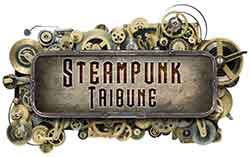Manfred von Richthofen, the “Red Baron”, March 1918, by Chris CollinwoodBorn 1892; Died 1918
Age 25, 145 lbs; An athletic German with pale eyes and close-cropped dark hair, usually waring an avators cap at a jaunty angle, the “Blue Max” (Ordre Pour le Merite) over a scarf, and a grey uniform.Advantages: Acute vision, attractive, combat reflexes, military rank (captain), Reputation (Ace of Aces, amoung both sides of the front), WealthyDisadvantages: Code of Honor (Knights of the Air), Duty, Migranes, OverconfidenceEquipment: The Red Baron will usually be somewhere near an Albatross III biplane or Fokker triplane. In combat,he wears a heavy leather flying jacket. This is Richthofen shortly before his death. His code of honor is a varient of the Gentlemans Code, incorporating a dash of old-fashioned battlefield chivalry.
After shooting down 16 planes, in November 1916, he was granted his own squadron. Almost all the pilots were aces, and everyone painted their craft in wild colors; Richthoftens was red. It was a roving unit, moving whenever observation plane activity was its highest. Richthofens squadron was nicknamed “The Flying Circus” by the British. Richthofen gained the nom de guerre, “The Red Baron”.On March of 1917, Richthofen was shot down, but survived. April was an incredible month for him, with 21 confirmed victories, incluiding four in one day. It would be called “Bloody April” by the British who lost 912 pilots and observers. The Red Baron, by Tim FischerOn May 1st, Richthofen was called home. At this point, he had 52 kills, more than anyone else on either side. He met top commanders, was the guest of the Kaiser, was promoted to captain, and toured Germany as a celebrity. During this time, he wrote his autobiography. He returned to the front at the end of June. His squadron was enlarged, and renamed the Richtofen Squadron.
In July he was shot down again by two British pilots; though he landed safely, he received a head wound. He recovered, but suffered severe headaches for the rest of his life. The High Command, recognizing the morale boost his death would give the Allies, pressured him to leave front-line service, assigning him to administration and publicity tours. Eventually, the apparently realized they had to let him do what he did best.
In September, with 63 kills, he took an extended leave of absence. Returning in March of 1918, he brought a score of 80. On April 21st, he pursued Wiilfred Mays Sopwith Camel far behind British lines. Flying low, he was hit in the chest, either by gunners on the ground or by a Canadian flying to Mays aid, and crashed. The British buried him with full military honors. In the 1920s, his coffin was disinterred and transported to Germany for reburial, again with full military honors. In for the kill, by Ivan BarrymanEncountered
In combat, Richthofen will try to out-think an opponent, and then go for the kill. (This assumes comparable aircraft; faced with an evidently superior foe, even he may know when to retreat). On the ground, he is a military gentleman, slightly cocky, but willing to give any worthy flyer a slap on the back, a smile, and a drink. He could be the model for a dashing pilot in any number of settings.Richthofen and Avaition
The Red Baron was an excellent shot, but not such a great pilot. He received little training, as was typical of the day, but neither did the pilot on the other side. His tactics, helped define much of the machine-gun era of air-to-air combat. Attacking from out of the sun, the advantage of higher altitude, and his adage “the quality of the box matters little. Success depends upon the man who sits in it”, are ideas familiar to fighter pilots to this day. He was not the first person to try mounting machine guns where the pilot could shoot, creating the modern fighter, but he was close. He epitomizes the dashing, romantic pilot of the First World War, the very image of the War in the Air, as a “gentlemanly” flight.
He was hardly infallible: he crashed a number of undamaged aircraft, was shot down three times, and made some very foolish mistakes in his final encounter. Good press and a high number of kills establiehsd much of his retputation.Furhter Reading:
Kilduff, Peter: Richthofen: Beyond the Legend of the Red Baron
von Richthofen, Manfred: The Red Fighter Pilot, trans. By J. Ellis BarkerInternet Resources
http://www.wwiaviation.com/aces/ace_Manfred_von_Richthofen.shtml
http://www.diggerhistory.info/pages-air-support/ww1/richthofen.htm
http://history1900s.about.com/od/1910s/a/redbaron.htm
http://www.speedace.info/the_red_baron.htm
http://web.missouri.edu/~news/releases/ormeredbaron.html
http://www.firstworldwar.com/features/aces.htmAnd fantastic military artwork, including WW1 fighter battles, at First World War Military Art Printshttp://www.first-world-war.com/the_red_baron.htm Stoddard (1999) – Gurps Who’s Who II, pg. 116-117, SJG:Austin
[edited for removal of game specific content]



